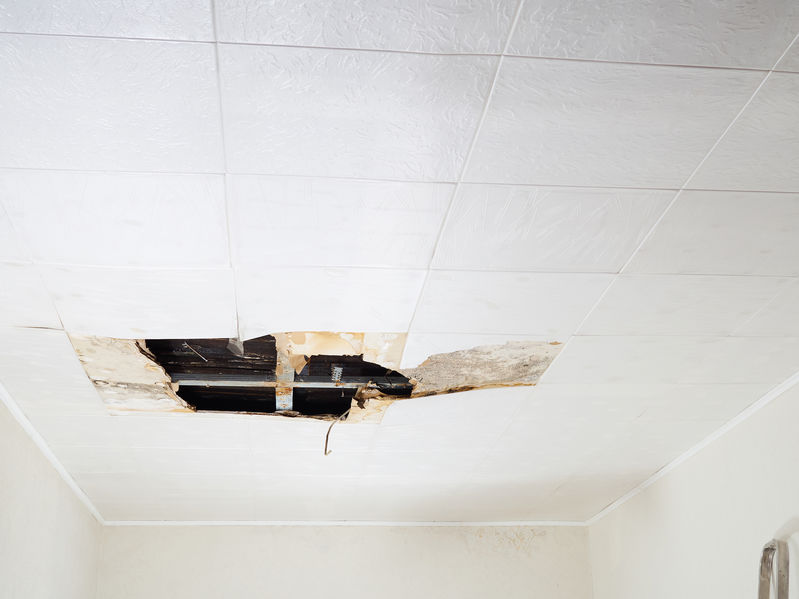 Mold spores can grow into bigger colonies as long as they find the right conditions that favor their existence. Mold requires food, moisture, and humidity to grow and usually thrives well in cellulose-based products like drywall. Drywall mold is considered potentially harmful as it can have a huge impact on your health and structural integrity of your property. Mold on drywall can grow and multiply rapidly if you do not act promptly or manage them properly. This article looks at how mold grows on drywall, why it is dangerous, and what you can do to mitigate the problem.
Mold spores can grow into bigger colonies as long as they find the right conditions that favor their existence. Mold requires food, moisture, and humidity to grow and usually thrives well in cellulose-based products like drywall. Drywall mold is considered potentially harmful as it can have a huge impact on your health and structural integrity of your property. Mold on drywall can grow and multiply rapidly if you do not act promptly or manage them properly. This article looks at how mold grows on drywall, why it is dangerous, and what you can do to mitigate the problem.
How Does Mold Grow on Drywall?
Mold can grow on a variety of surfaces depending on their porosity. Porous surfaces tend to attract moisture, which creates a perfect environment for mold to grow. Mold can also grow on non-porous surfaces that have accumulated a lot of dirt and grime that makes it damp when exposed to moisture. Walls made of drywall or sheetrock are very porous which makes them susceptible to mold as long as there is a constant level of humidity and moisture in the air.
The wood particles on drywall provide a source of food for mold and traps moisture, which speeds up its growth. It is considered a perfect area for unimpeded mold growth because of its porous nature. Water can move in any direction on the drywall as it wicks easily through the softwood particles. Water leaks are another cause of mold on drywall and can make it difficult to address the problem if it is not repaired in time.
Why Drywall Mold is Dangerous
- It Can Spread Easily
Mold can easily spread on drywall especially if it covers the largest portion of your home. It can grow and multiply rapidly as long as there are favorable conditions that promote its growth. The spores may become airborne, spreading to other areas in your home such as your HVAC system, furniture, and crawlspaces. The problem can worsen if you do not address it in time, which translates into future costs of repair and mold remediation.
- It Can Cause Allergic Reactions
Mold can cause allergic reactions when inhaled, or when it encounters your skin and eyes. The body recognizes airborne mold spores as foreign invaders and responds by producing antibodies to fight them. Some ways of how your body tries to expel foreign substances from your body are through sneezing, runny nose, watery eyes, and coughing. Some of the common molds that cause allergies include aspergillus, Alternaria, Penicillium, and Cladosporium.
- It Can Damage Your Property
Although mold spores are not corrosive, they can cause extensive damage to your drywall. They can cause stains and rot which may have to be replaced if you want to completely get rid of the mold. Mold spores can also become airborne and spread to other areas of your home such as carpets, and furniture. This means you will not only be replacing your drywall but also other porous materials that are infested by mold.
- It Can Cause Mold-Related Illnesses
Mold can cause serious health problems such as asthma attacks, respiratory infections, and lung conditions. It can worsen existing asthma or trigger an attack that makes it difficult to breathe without an inhaler. Mold can also cause other diseases such as hypersensitivity pneumonitis, which is a condition that occurs when inhaled mold spores cause inflammation in the lungs.
How to Get Rid of Mold on Drywall?
The first thing you need to do is to fix any leaks that might have caused the mold problem. DIY mold removal can only be done on areas that are less than ten square feet. There are many factors to consider such as whether the mold is on top of paint or inside the drywall. For instance, mold growing on top of the paint and covers a small area can be removed in chunks. However, it is quite difficult to get rid of mold from drywall if it covers a large area because of its porous nature. If it goes deeper into the wall, then the best option is to have it removed and replaced with new drywall.
Drywall mold is dangerous as it can cause serious health problems and damage to your property. It is important to find and fix water leaks as they speed up the growth of molds. If your drywall is infested by mold, the best way to prevent mold from recurring is to replace it with a new one. Not only does it save money in the long run, but also saves time for mold remediation.
